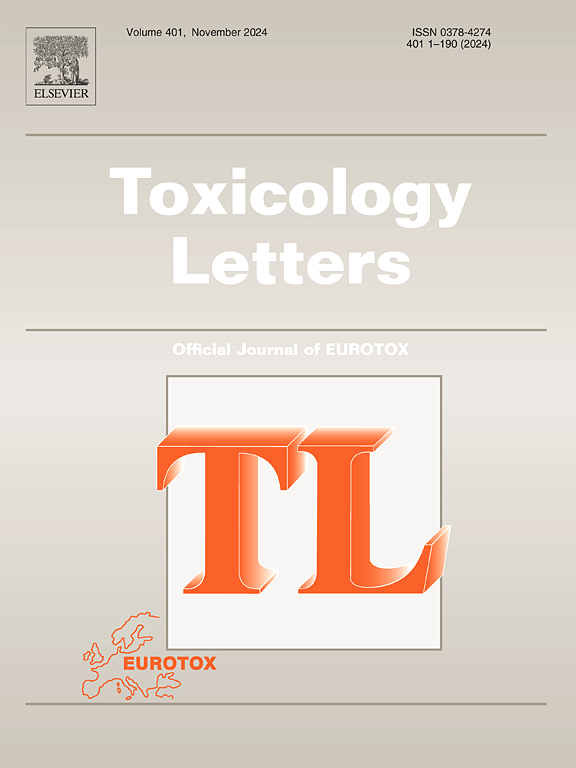Evaluation of the causal effects of perfluorooctanesulfonate on COVID-19 and its associated mechanisms: Integrated Mendelian randomization and network toxicology analyses
IF 2.9
3区 医学
Q2 TOXICOLOGY
引用次数: 0
Abstract
Observational reports have suggested that exposure to perfluorooctanesulfonate (PFOS) can influence COVID-19 infection-related parameters. This study thus sought to use integrated Mendelian randomization (MR) and network toxicology approaches to clarify the potential causal link between PFOS exposure and COVID-19 severity and the molecular mechanisms underlying this relationship. Inverse-variance-weighted analyses highlighted a causal link between plasma PFOS concentrations and a greater risk of sCOVID-19 (OR 1.293, 95 % CI 1.077–1.552, p = 0.006), but not of SARS-CoV-2 infection (p = 0.257) or COVID-19 hospitalization (p = 0.516). No causal link between PFOS concentration and sCOVID-19 was found by reverse MR. In total, 65 targets were tentatively linked to the relationship between PFOS exposure and sCOVID-19. GO and KEGG analyses highlighted involvement in pathways associated with kinase activity, inflammatory responses, and epithelial and endothelial cell migration. In molecular docking analyses, PFOS was confirmed to readily bind to all five analyzed core targets (IL10, ALB, NOTCH1, PPARG, and NFE2L2). These results suggest that PFOS exposure is causally linked to sCOVID-19 risk, while also offering promising insights into the mechanisms that may underlie this association and candidate targets for treatments aimed at limiting the negative effects of PFOS on COVID-19 severity.
评估全氟辛烷磺酸对COVID-19的因果效应及其相关机制:综合孟德尔随机化和网络毒理学分析
观察性报告表明,接触全氟辛烷磺酸(PFOS)可影响COVID-19感染相关参数。因此,本研究试图使用综合孟德尔随机化(MR)和网络毒理学方法来阐明全氟辛烷磺酸暴露与COVID-19严重程度之间的潜在因果关系以及这种关系背后的分子机制。反方差加权分析强调血浆全氟辛烷磺酸浓度与更高的scovd -19风险之间存在因果关系(OR 1.293, 95% CI 1.077-1.552, p = 0.006),但与SARS-CoV-2感染(p = 0.257)或COVID-19住院(p = 0.516)无关。反向mr法未发现全氟辛烷磺酸浓度与sCOVID-19之间存在因果关系。总共有65个靶点与全氟辛烷磺酸暴露与sCOVID-19之间存在初步联系。GO和KEGG分析强调了与激酶活性、炎症反应以及上皮和内皮细胞迁移相关的通路的参与。在分子对接分析中,PFOS被证实可以很容易地结合所有五个分析的核心靶点(IL10、ALB、NOTCH1、PPARG和NFE2L2)。这些结果表明,全氟辛烷磺酸暴露与sCOVID-19风险存在因果关系,同时也为这种关联背后的机制和旨在限制全氟辛烷磺酸对COVID-19严重程度的负面影响的候选治疗靶点提供了有希望的见解。
本文章由计算机程序翻译,如有差异,请以英文原文为准。
求助全文
约1分钟内获得全文
求助全文
来源期刊

Toxicology letters
医学-毒理学
CiteScore
7.10
自引率
2.90%
发文量
897
审稿时长
33 days
期刊介绍:
An international journal for the rapid publication of novel reports on a range of aspects of toxicology, especially mechanisms of toxicity.
 求助内容:
求助内容: 应助结果提醒方式:
应助结果提醒方式:


